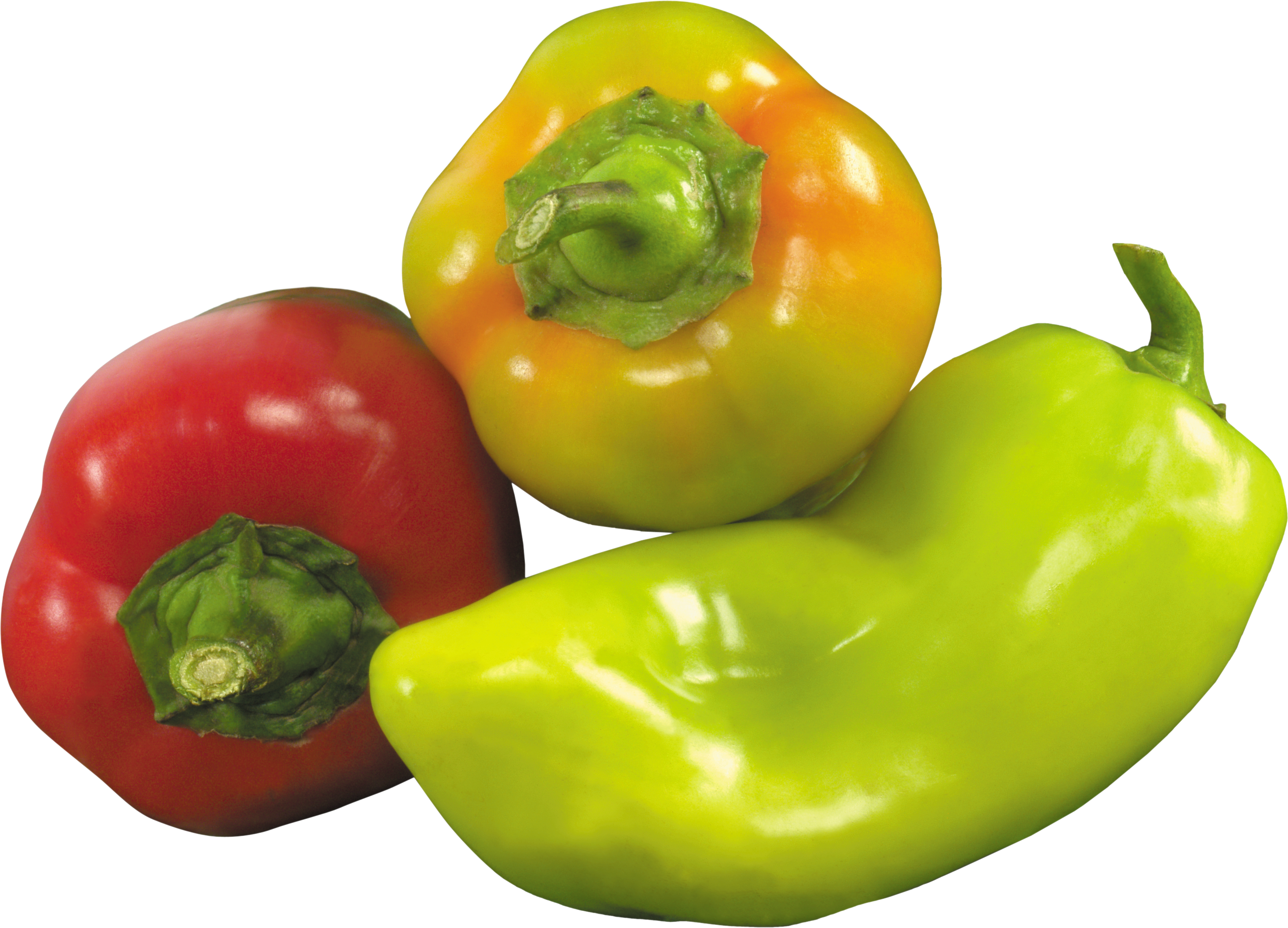
This image has format transparent PNG with resolution 2927x2108.
You can download this image in best resolution from this page and use it for design and web design.
Pepper PNG image with transparent background you can download for free, just click on download button.
The bell pepper (also known as sweet pepper or pepper in the United Kingdom, Canada and Ireland, Australia, India, Pakistan, Bangladesh, Singapore and New Zealand) is a cultivar group of the species Capsicum annuum. Cultivars of the plant produce fruits in different colors, including red, yellow, orange, green, chocolate/brown, vanilla/white, and purple. Bell peppers are sometimes grouped with less pungent pepper varieties as "sweet peppers". The whitish ribs and seeds inside bell peppers may be consumed, but some people find the taste to be bitter.
Peppers are native to Mexico, Central America, and northern South America. Pepper seeds were imported to Spain in 1493, and from there spread to other European, African, and Asian countries. Today, China is the world's largest pepper producer, followed by Mexico and Indonesia.
Ideal growing conditions for bell peppers include warm soil, ideally 21 to 29 °C (70 to 84 °F), that is kept moist but not waterlogged. Bell peppers are sensitive to an abundance of moisture and extreme temperatures.
The most common colors of bell peppers are green, yellow, orange and red. Other colors include brown, white, lavender, and dark purple, depending on the variety. Most typically, unripe fruits are green or, less commonly, pale yellow or purple. Red bell peppers are simply ripened green peppers, although the Permagreen variety maintains its green color even when fully ripe. As such, mixed colored peppers also exist during parts of the ripening process.
Like the tomato, bell peppers are botanical fruits but culinary vegetables. Pieces of bell pepper are commonly used in garden salads and as toppings on pizza or cheesesteaks. There are many varieties of stuffed peppers prepared using hollowed or halved bell peppers. Bell peppers (and other cultivars of Capsicum annuum) may be used in the production of the spice paprika.
Bell peppers are 94% water, 5% carbohydrates, and negligible fat and protein (table). They are rich sources of vitamin C, containing 97% of the Daily Value (DV) in a 100 gram reference amount (table). Their vitamin B6 content is moderate (17% DV), with no other micronutrients present in significant amounts (table). Red bell peppers have approximately twice the vitamin C and eight times the vitamin A content than green bell peppers.
The bell pepper is the only member of the genus Capsicum that does not produce capsaicin, a lipophilic chemical that can cause a strong burning sensation when it comes in contact with mucous membranes. They are thus scored in the lowest level of the Scoville scale. This absence of capsaicin is due to a recessive form of a gene that eliminates the compound and, consequently, the "hot" taste usually associated with the rest of the genus Capsicum. This recessive gene is overwritten in the Mexibelle pepper, a hybrid variety of bell pepper that produces small amounts of capsaicin (and is thus mildly pungent). Sweet pepper cultivars produce non-pungent capsaicinoids.
Here you can download free PNG images on theme: Pepper PNG image, free download pepper PNG pictures